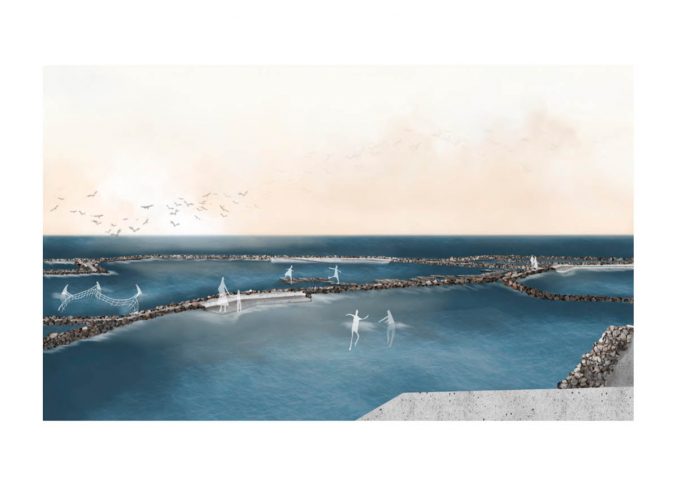
Sea + Survival is a systems-based project located in the mouth of Langebaan Lagoon, South Africa. The design utilises the dune system’s ability to act as a sponge to combat sea-level rise. The project uses natural systems as a defense, reduces existing ecological and societal pressures in Langebaan, and responds to the cultural histories within the region.
Key contextual points:
- The town was subject to two iniquitous periods:
- Conflicts between colonists and the indigenous Khoekhoe.
- Apartheid and the removal of the Cape Malay.
- Sea defense options are challenged by the absence of coastal space.
The design proposal is a land claim in the form of two ecological islands that harness the natural systems of the region. These systems are the aeolian sediment transport, the tidal forces of the lagoon, and the salt marsh complex in the West Coast National Park. The idea of forming the island is based on McHarg’s theory of a naturally formed island from a sub-tidal sandbar.
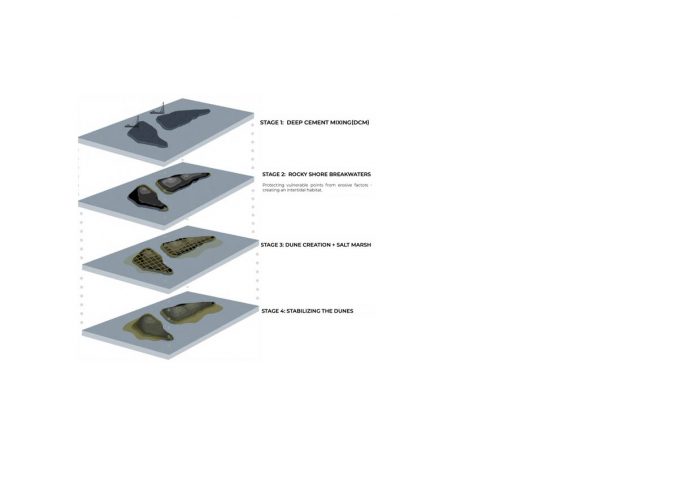
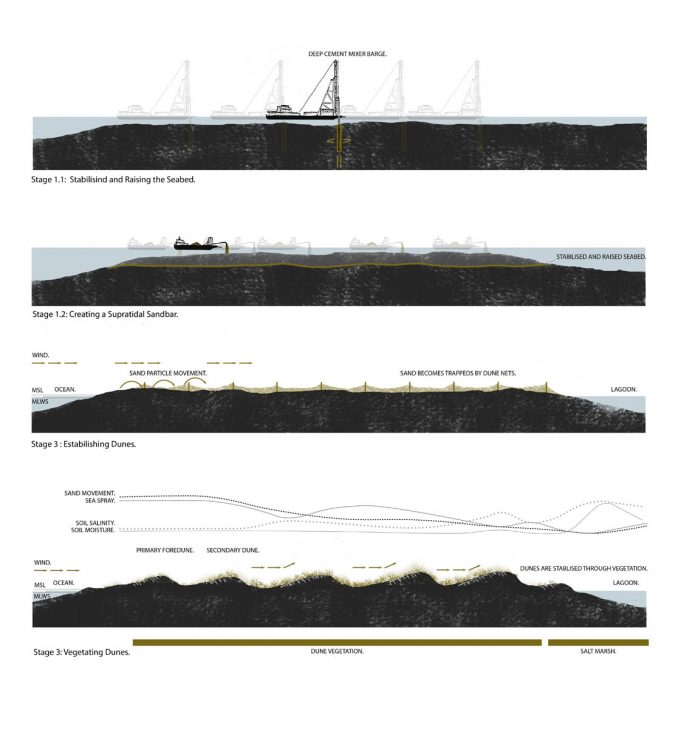
The forms of the islands were derived from three process-based experiments where water is flowed through a model of the lagoon mouth, simulating the ebb current:
- Control
- Sand is added
- Two non-formed islands are placed offshore on the existing sub-tidal sandbars adjacent to either side of the channel.
These experiments performed the role of the channel and aided in a better understanding of the channel in relation to the sandbars.
The islands respond to the pinch-point created by irresponsible coastal development by releasing the pressure on the existing public spaces in the town and reintroducing/strengthening cultural practices.
The main node is found where the activity along the beach edge of ‘Vis Eiland’ (fish island) begins unraveling. Here, the design looks at the ocean as a resource and a recreational space by designing artisanal Khoekhoe vis-vywers (fish weirs) to function both as marine food provision and as a tidal pool. The shapes of the weirs are derived from the paving ruins of a Dutch colonial outpost (Oudepost 1). Quarried stones from old sea defenses are repurposed as adventure play and surface area to engage with intertidal rocky shores. The landscape is concealed and revealed through tidal action and the dunes explore how the deposition of sand naturally softens the man-made edges.
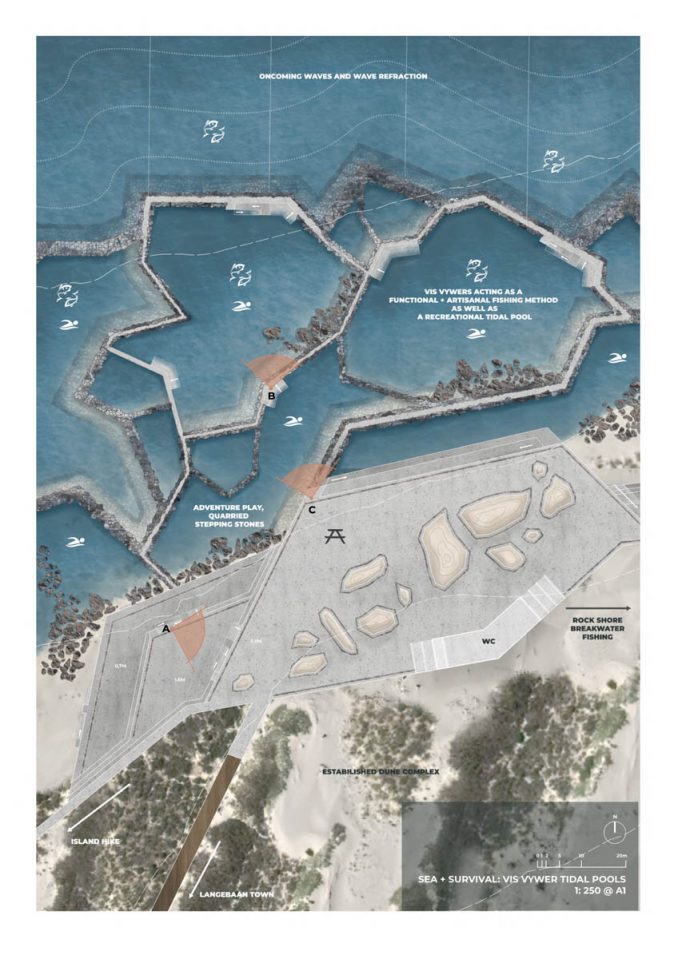
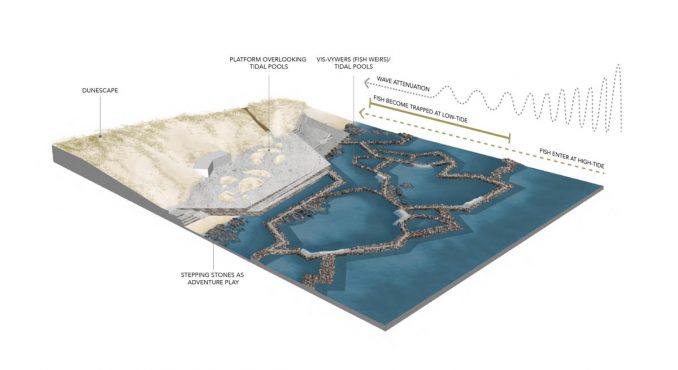
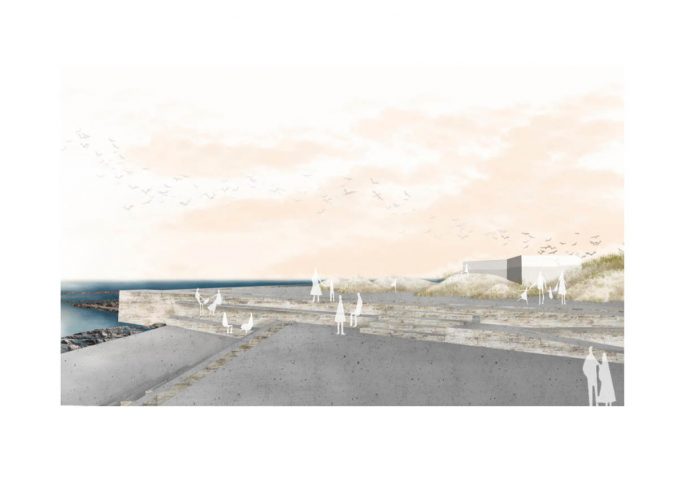
Coastal landscapes are cosmic spaces, so to pay respect to their nature, large platforms are designed to have a minimalistic approach where leveling creates seating, and the views are uncompromised. The platforms then taper off into the pools, initiating a human-scaled engagement with the ocean. The human scale is further explored through miniature dunes that pierce the large platform creating play spaces and lending to the idea of this as an explorative landscape of water, sand, and stone.
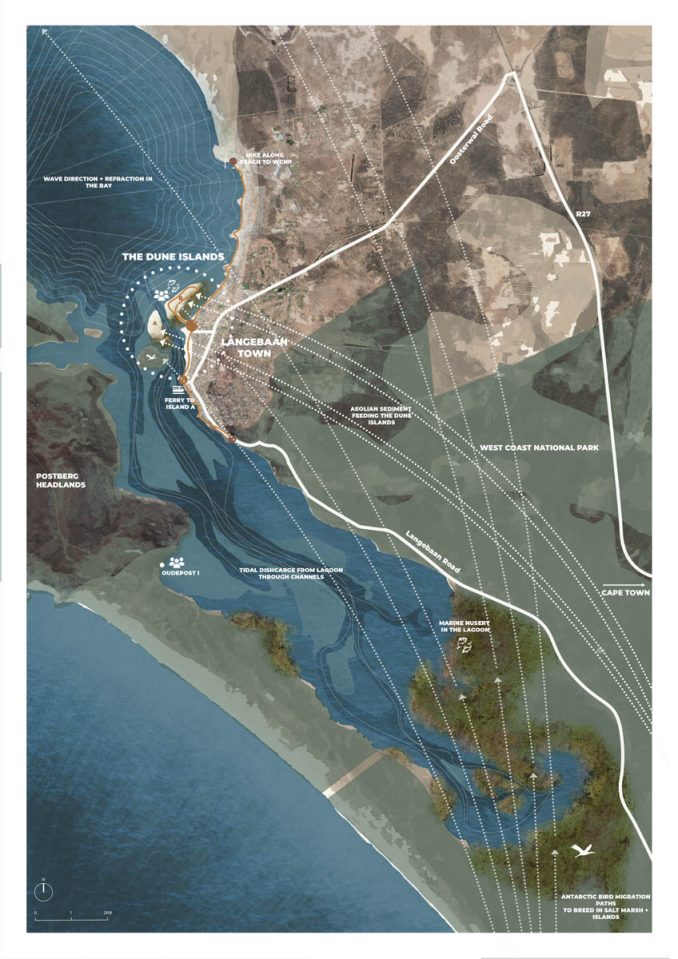
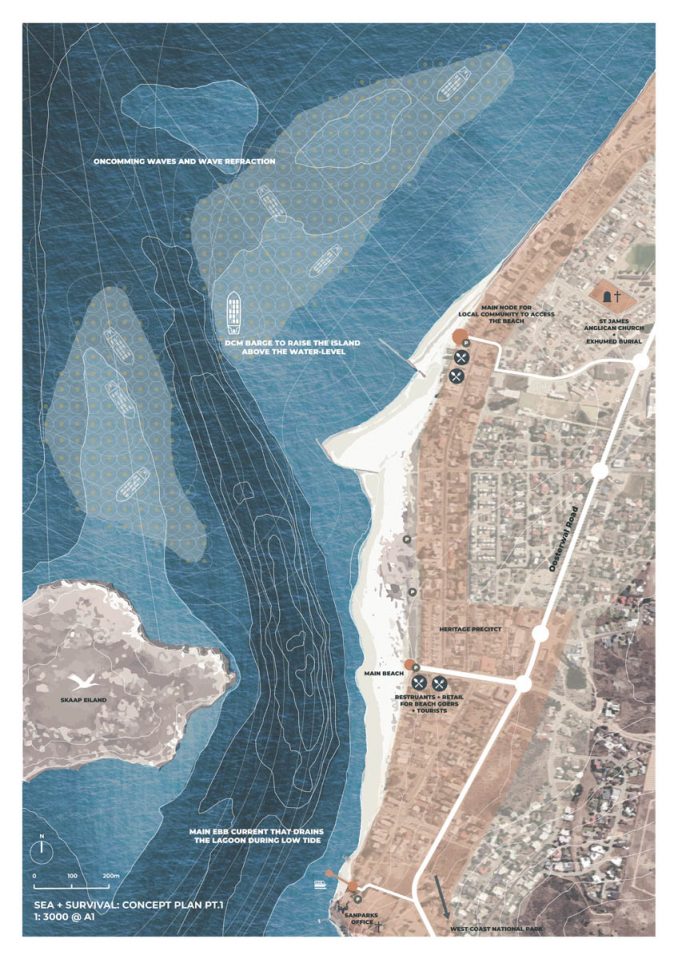
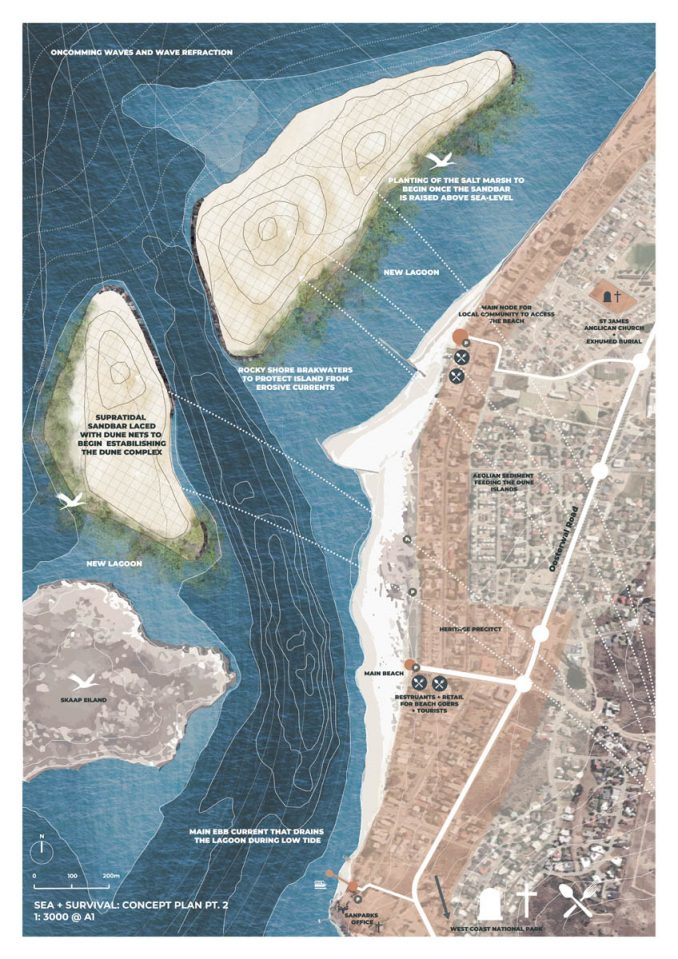
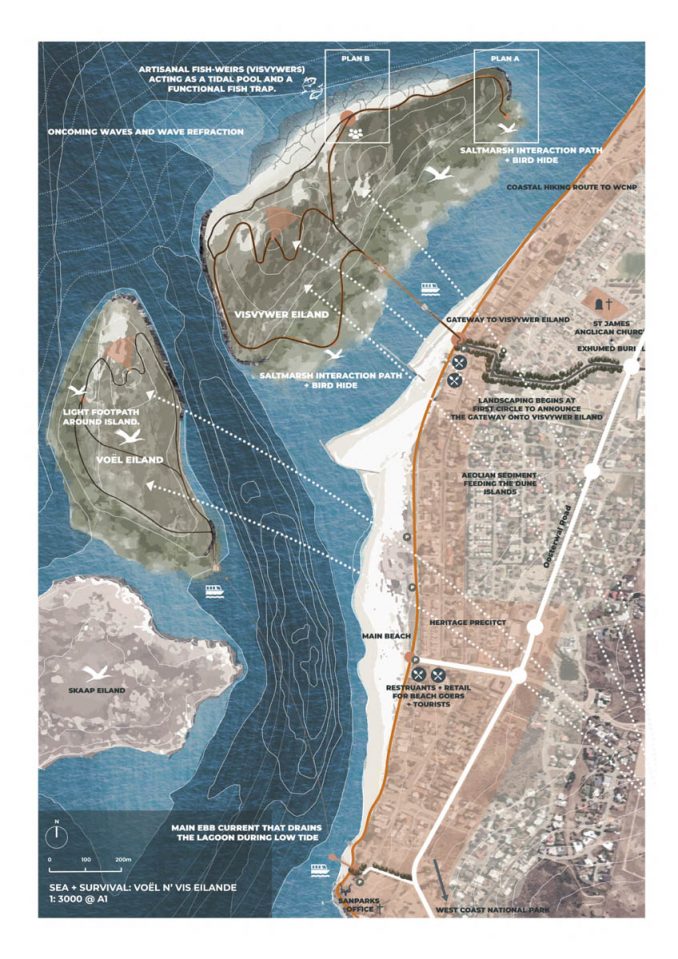
SEA + SURVIVAL: Choreographing Dune Systems to Defend Against Climate Change
Student Name: Abigail Victoria Sendall
School: University of Cape Town, South Africa
Supervisor: Amy Thompson, YES& Studio
